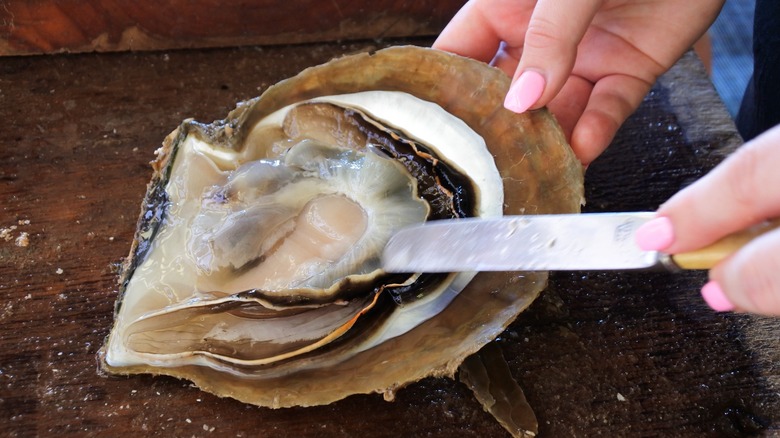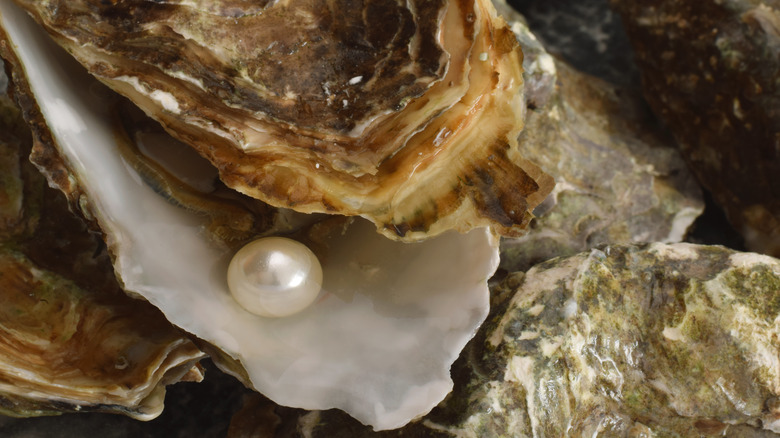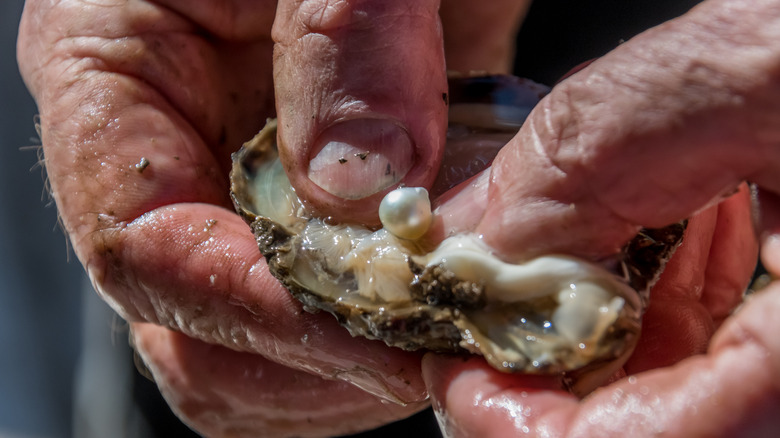What Is Pearl Meat, And Why Is It So Hard To Come By?
Oysters are a type of shellfish that can be harvested from saltwater along coastlines all over the world. They're prepared and served in plenty of ways, from fully raw (on the half shell), to grilled or fried.
Traditionally, oysters are one of the more expensive types of shellfish, especially when compared to shrimp or clams, but this wasn't always the case. Back in the 1800s, oysters were often served for free at restaurants and were consumed by people with little money, but as their popularity increased, it became more difficult to keep up with demand. As a result, oysters are now considered a delicacy and are a costly addition to any meal.
Pearls, which grow within oysters, are known for being a coveted type of jewelry. Beyond being worn as earrings, pearls create a type of meat within an oyster known as "pearl meat" — which you can expect to pay a pretty penny for due to its scarcity. But what exactly is it, and why is it so rare?
What is pearl meat?
In short, pearl meat is the meat that's harvested from a pinctada oyster, a type of oyster found in Australian waters, that has developed a pearl. Pearls are actually a defense response from the pinctada oysters. When any sort of organism or irritant gets inside the oyster's shell, it coats the irritant in nacre, the material pearls are made of, to defend itself. However, the coating process, which eventually produces a round pearl, is extremely slow. It can take up to 12 years for an oyster to fully form a pearl. As a result, the meat within those pearl-forming oysters, called the adductor muscle, is difficult and time-consuming to grow.
The muscle meat cannot be picked from the oyster until the oyster is done forming the pearl. Once it's picked, it is given a salt water rinse, then frozen, before being distributed. But if you were hoping to walk into any upscale restaurant and find it on the menu, you're likely out of luck. It's extremely hard for restaurateurs to get their hands on the stuff, which only adds to its exclusivity and cost.
How much does pearl meat cost?
The muscle meat of a pinctada oyster is tender, flavorful, and incredibly rare, making it a trifecta in terms of its desirability. In Hong Kong, demand for the meat has grown tremendously in recent years; as a result, it costs around $200 for a little more than 1 kilogram, or 2 pounds of it. Each oyster yields about 20 grams of meat, so $200 is just 50 pinctada oysters' worth — and that's not including the preparation and added costs restaurants must charge to make a profit. It's mostly available within Australia and Hong Kong, but only in very high-end restaurants. At Flower Drum in Melbourne, the pearl meat of just one pinctada oyster is on the menu for $32 Australian.
"If a restaurant wanted to use it, they'd be very lucky to be able to get hold of it," James Brown, a pearl farmer and marine biologist, told Atlas Obscura. "People like that. It creates demand."


